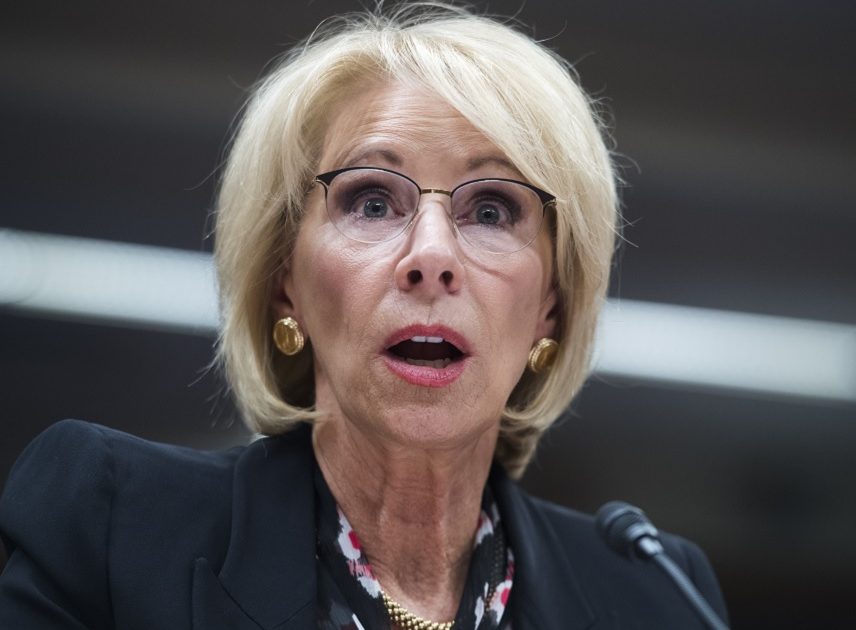What to make of the debate on how to open schools?
On the one hand, we have the president and Betsy DeVos, who seem to be ignoring most of the health information contained in a report, which was marked “For Internal Use Only”, that had more sensible guidance for schools and even urged districts in communities where the virus was spreading more rapidly to have classes conducted entirely online, who are urging all schools to open five days per week with all students in the building.
On the other hand, we have education and health professionals who are urging caution because,well, we are still in the midst of the first wave of a global pandemic and conditions in the United States are getting worse, much worse, by the day.
Every teacher in this country understands that students need to be in school. It is key for a child’s social, educational and emotional development. We all know that. The issue is not that we need to open, but how to open safely and create an environment where every child can learn. The evidence does suggest that younger people are not impacted to the same degree as older people and that they don’t spread it at the same rate. We get that too.
What we also know, though, is that enclosed, poorly-ventilated spaces in which people are talking are prime breeding grounds for the virus. Yes, the guidelines call for students to wear masks, but students do not always do what they are told to do, and since they won’t be mandatory for the children, there’s little a teacher can do if a child refuses to wear one or puts the mask below their nose or chews a hole in it where their mouth is. And parents who need to work might give their feverish child a fever reducer and send them on their way so the parent can go to work. Hallways are crowded places. Teenagers like to hug, and more, in various areas of school buildings.
This is why teachers are pushing back against reopening plans that do not take into account their concerns about workplace safety. Many teachers have complicated health issues or are worried about bringing the virus back to their homes where their children, elderly parents or other adults with health concerns live. Teachers are also concerned that cash-strapped school districts will not be able to fully meet the guidelines that are meant to insure that schools open safely, or to invest in distance-learning software or protocols that will enable all students to thrive whether they are in the classroom or at home. Federal and state governments have been defunding education for decades. We are now seeing a literal struggle over the life and death of schools and their staff.
In short, this is a far more complicated answer than what the president and Secretary DeVos want to hear. The president is concerned about his reelection prospects given that adults can’t go back to work if they have to stay home and take care of children who are on alternate day schedules or have decided that their child will stay home rather than go into schools where the danger is real. Secretary DeVos is supporting the president’s proposal to strip already cash-starved public school districts of federal funds if they don’t fully open, despite the health risks.
America’s public school teachers already know that they are not as valued as they should be, are not paid commensurate with their educational levels and value to society, and are seen as union saps who slavishly toe the NEA/UFT line. The president went so far as saying that history teachers especially seek to propagandize students and teach them to hate America. None of this is in any way accurate
but, there is a sizable chunk of people in this country who believe it.
The difference now is that teachers are being asked to put their health and lives at risk. Even in districts that will have students alternate days or weeks, teachers are expected to be in classrooms every day. The best science we have now says that the virus thrives in poorly ventilated, enclosed rooms where people are exposed to each other for lengthy periods of time while talking, coughing, sneezing, or singing. In short, your child’s classroom. This is the part of the discussion that the president and Secretary DeVos have ignored or minimized. Yes, school is about student learning, but it’s also about teachers who make sure that the classroom is safe and secure.
For all of the planning, my sense is that schools will be shut down again because this virus is not going away. Students will test positive. Teachers will test positive (is this the point at which the lawsuits begin?). Communities will be justifiably angry and scared. Maybe this happens in October or maybe it happens when the flu starts to mingle in around November or December.
We have one chance to get this reopening right. Let’s make sure we do just that.
For more, go to www.facebook.com/WhereDemocracyLives or Twitter @rigrundfest
Reopening School








